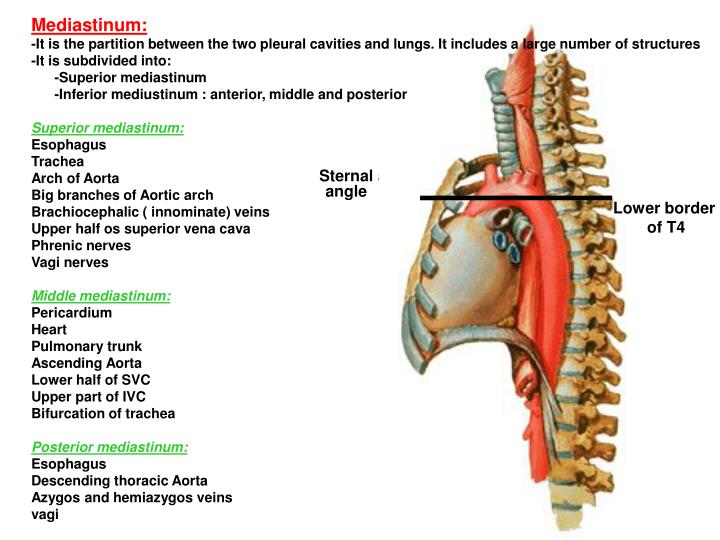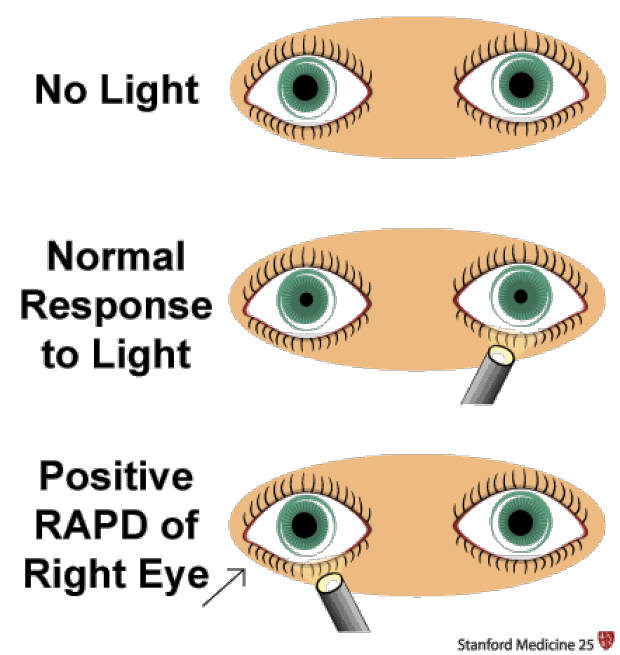The nurse is doing an examination of a client's anterior thorax. The nurse recognizes that the trachea bifurcates anteriorly at the:
Xiphoid process.
Suprasternal notch.
Sternal angle.
Costal angle.
The Correct Answer is C
A. Xiphoid process:
The xiphoid process is a small, cartilaginous extension at the inferior end of the sternum (breastbone). It does not play a role in the bifurcation of the trachea.
B. Suprasternal notch:
The suprasternal notch, also known as the fossa jugularis sternalis or jugular notch, is the visible dip in the superior part of the manubrium of the sternum between the clavicular notches. It is an important anatomical landmark for assessing the position of the trachea during emergency situations but is not the location of tracheal bifurcation.
C. Sternal angle (Angle of Louis):
The sternal angle, or Angle of Louis, is a palpable notch located at the articulation of the manubrium and the body of the sternum. It is where the second rib attaches and serves as a useful reference point for counting ribs and locating internal structures like the tracheal bifurcation.
D. Costal angle:
The costal angle is the acute angle formed by the junction of the costal margins at the xiphoid process. It is not related to the tracheal bifurcation.

Nursing Test Bank
Naxlex Comprehensive Predictor Exams
Related Questions
Correct Answer is D
Explanation
A. The eyes converge to focus on the light.
This statement refers to the convergence reflex, where both eyes move medially (towards each other) to maintain single binocular vision when focusing on a near object. It is not related to the pupillary light reflex, which involves changes in pupil size in response to light.
B. The eye focuses the image in the center of the pupil.
This choice does not accurately describe the pupillary light reflex. The pupillary light reflex involves constriction of the pupil in response to light, not focusing an image in the center of the pupil.
C. Dilation of both pupils occurs in response to bright light.
This statement is incorrect. In response to bright light, the pupils should constrict, not dilate. Dilation of pupils in bright light could indicate an abnormal response, such as in cases of certain neurological conditions or drug use.
D. Constriction of both pupils occurs in response to bright light.
This choice is correct. In the pupillary light reflex, both pupils constrict when exposed to bright light. This response is a protective mechanism to prevent excessive light from entering the eyes, ensuring optimal visual acuity.

Correct Answer is D
Explanation
A. Indicates the beginning of diastole: This statement is not accurate. S2, the second heart sound, indicates the end of systole and the beginning of diastole. It is specifically associated with the closure of the aortic and pulmonary valves.
B. Coincides with the carotid artery pulse: This statement is not accurate. S2 is associated with the closure of the aortic and pulmonary valves in the heart, not with the carotid artery pulse.
C. Is louder than an S1: This statement is not accurate. S1, the first heart sound, is usually louder than S2. S1 is associated with the closure of the mitral and tricuspid valves and marks the beginning of systole.
D. Is caused by the closure of the semilunar valves: This statement is accurate. S2 is caused by the closure of the aortic and pulmonary valves, which are the semilunar valves in the heart. It marks the end of systole and the beginning of diastole.

Whether you are a student looking to ace your exams or a practicing nurse seeking to enhance your expertise , our nursing education contents will empower you with the confidence and competence to make a difference in the lives of patients and become a respected leader in the healthcare field.
Visit Naxlex, invest in your future and unlock endless possibilities with our unparalleled nursing education contents today
Report Wrong Answer on the Current Question
Do you disagree with the answer? If yes, what is your expected answer? Explain.
Kindly be descriptive with the issue you are facing.
